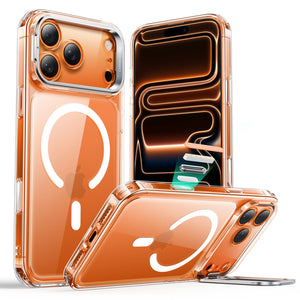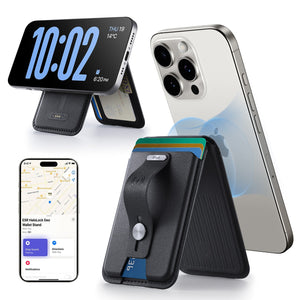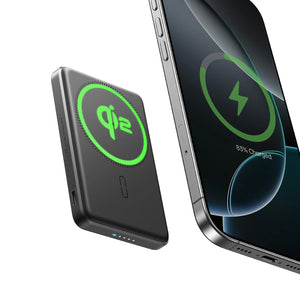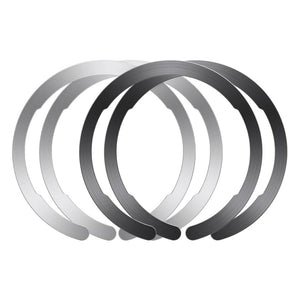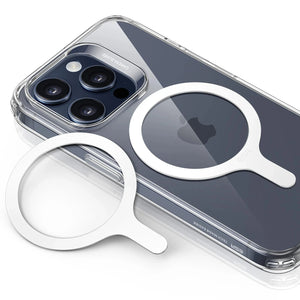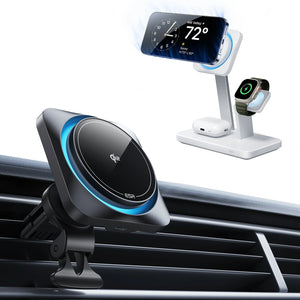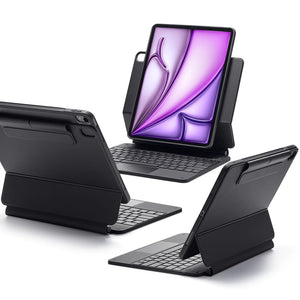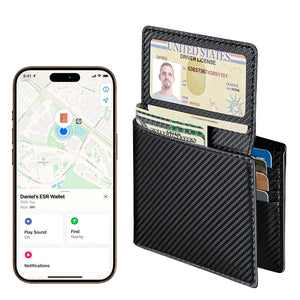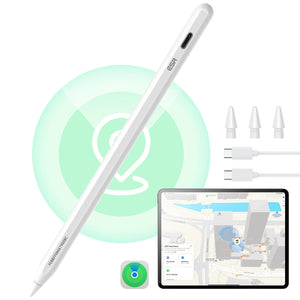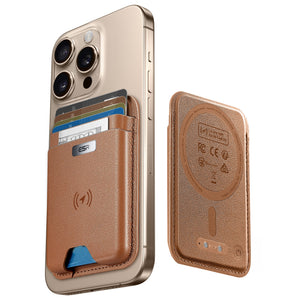Ever noticed your screen protector peeling at the edges or full of bubbles that just won’t go away? It happens to almost everyone, and it’s not just annoying. This dilemma makes your phone look worn out and harder to use. Many people rush to peel it off but end up scratching the screen or leaving sticky marks behind. Thus, knowing how to remove screen protector the right way matters.
From using a little heat and regular tape to professional tools, a lot of choices are available for anyone to do it safely. This guide walks through simple methods that keep your screen scratch-free on iOS devices. Follow along for an easy approach before you try pulling it off with your nails.

How to Safely Remove a Screen Protector at Home
Understanding the Core Problems When Removing a Screen Protector
Standard Removal Methods: What They Are
Handling Edge Cases During Protector Removal
Choosing the Right Tools for the Job
Conclusion: Get the Best iPhone/iPad Protectors from ESR
Understanding the Core Problems When Removing a Screen Protector
Many ask why something as small as removing a screen protector ends up feeling like a risky job. The struggle usually begins the moment you try lifting a corner and realize it’s not going to come off that easily. That is why knowing how to remove a screen protector safely makes a huge difference. Let’s take a closer look at what makes it tricky and why to avoid the wrong approach.
1. Why Removing a Screen Protector Feels Risky
● Fear of Damaging the Screen: Gentle force can lead to scratches or cracks on delicate or older screens.
● Tempered Glass Can Shatter: Some screen protectors don’t just peel but crack. In fact, glass ones can splinter during removal when not handled properly.
● Leftover Sticky Residue: Even after removing the screen protector from your iPhone, iPad, Apple Watch, or camera lens, you get stuck with a sticky layer that won't go away and make your screen usage difficult.
2. The 3 Universal Screen Protector Disasters:
|
Challenge |
Why It Is a Problem |
|
Standard Removal |
Older protectors cling tightly, making clean removal frustrating. |
|
Edge-to-Edge Screens |
Curved edges leave little room to lift without affecting the glass. |
|
Tool Confusion |
Sharp tools cause damage; safe options aren't always obvious. |
Standard Removal Methods: What They Are
What do most people try first when dealing with a stubborn protector? It usually starts with the most basic techniques, which you have likely seen if you’ve ever searched how to take off screen protector on an iPhone:
Method 1. Heat Application
A simple way to loosen a screen protector is to apply a little warmth. It permits much easier removal without cracking because a bit of heat softens the sticky adhesive layer. When searching for how to take off a screen protector from an iPad without any harm, this approach works well. The following is how to use heat in the right way without issues:
Option 1. Hairdryer Method
Step 1. Power up a hairdryer and set it to low heat to hold it about 6 to 8 inches away from the screen.

Step 2. Blow warm air over the protector for around 20–30 seconds, moving it slowly across the surface. Lastly, focus on the edges where you’ll try to lift the screen protector.

Option 2. Warm Towel Method
Step 1. Soak a clean towel in warmish water and wring it out to make it damp but not dripping.

Step 2. Place the towel gently over the screen for 30–40 seconds and remove it to start lifting from one corner of the protector.

Method 2. Tape Technique
Struggling to find a way to lift that stubborn corner without scratching your screen? Here’s a clever trick that works surprisingly well using simple adhesive tape. This method sticks to the protector, giving you a safe grip to pull it off gently. When wondering how to remove glass screen protector without breaking it or hurting your screen, the tape technique can be used with this guide.
Step 1. Get started by cutting a small piece of clear adhesive packing or Scotch tape. Then, firmly press it to one corner of the screen protector while ensuring it holds really tightly.

Step 2. Next, pull the tape upward and slightly backward in a slow motion to lift the corner. When it does, use fingers or a card to gently peel off the rest of the protector.

Why This Works
● Plastic protectors lift easily with this method, especially if they're thin.
● Glass protectors need firmer tape and slower movement, but they usually come off cleanly.
Handling Edge Cases During Protector Removal
Not all phones make it easy to take off the screen protector, especially those with curved edges or full-coverage glass. When trying to figure out how to remove screen protector from iPhone, these tricky edge cases need extra care:
Situation 1. Shattered Glass Protector
Dealing with a broken or cracked screen protector is annoying if small glass pieces are coming loose. When on the lookout for how to remove iPhone screen protector safely when it’s shattered, there’s one thing to keep in mind: safety comes first. This sort of broken glass can cause small cuts or damage the screen when improperly handled.

Important Safety Precautions
· Utilize thin gloves to protect the hands from the sharp edges of the screen.
· Place clear adhesive tape over the shattered protector to hold loose pieces together.
· Avoid using force, as pressing too hard can push broken bits into the screen of your iPhone, iPad, Apple Watch, or camera lens.
Safe Removal Steps
1. After fully taping the protector, gently lift one corner using a piece of tape or tweezers.
2. Pull slowly and evenly across, keeping the angle low to avoid stress on the glass.
3. When pieces begin to crack more, stop and reapply tape to hold them in place.
Situation 2. Sticky Residue Left on Screen
Despite getting rid of the protector, sometimes the job is not yet done. A layer remains behind on the mobile screen, making it feel dirty. That happens when the protector has not been changed for a while, and the adhesive has dried. Mastering how to remove screen protector from an Apple device and clean off the sticky mess requires you to learn:

Why Sticky Residue Happens
· The glue under the protector becomes dry and stubborn over time.
· Cheaper protectors often leave behind more residue than quality ones.
Safe Cleaning Materials to Use
1. 70% or Above Isopropyl Alcohol: Simply dissolves the adhesive without harming the screen.
2. Microfiber Cloth: Soft and gentle for cleaning sensitive glass surfaces perfectly.
Simple Cleaning Process
● Turn off the mobile to avoid any unwanted taps and dampen a microfiber cloth with a small amount of isopropyl alcohol.
● Gently wipe the screen in circles to get rid of the sticky spots from the mobile. Plus, avoid scrubbing too hard to protect the screen’s original coating.

Choosing the Right Tools for the Job
Digital devices need extra care when it comes to screen protectors. When searching how to remove a screen protector from Apple Watch, using the right tools makes all the difference between a clean peel and accidental screen damage:
Option 1. Professional Tools
When basic methods feel risky, having the right tools can make the job safer. Many people searching for how to take off screen protector end up finding and needing the right tools. Here is how professional tools help:
|
Tool |
How It Helps |
|
Suction Cups |
Gently lift a corner without touching or pressing on the screen surface. |
|
Plastic Picks |
Slide under the edges to loosen the protector without causing scratches. |
|
Screen Removal Kits |
Include safe tools and guides for full control. |
Why Should You Buy These Tools?
● You often replace screen protectors at home.
● Your device has curved edges or edge-to-edge glass.
● You’ve previously cracked a screen during removal attempts.
Option 2. Household Alternatives
You don’t always need fancy tools to get the job done. When trying to figure out how to take off a screen protector without spending money, some everyday items at home can work just as well, if used correctly:
|
Item |
How to Use Safely |
|
Dental Floss |
Slide gently under one corner in a back-and-forth motion to lift the protector. |
|
Credit Card |
Wedge under the lifted edge to separate the protector. |
|
Soft Cloth |
Wrap around a fingernail or a card to reduce pressure. |
How They Compare to Professional Tools?
● Pros: Easy to find at home with no extra cost, works well for thin or older protectors.
● Cons: May not offer as much control, especially on curved edges.
● Best For: Flat screens, lightly stuck protectors, and quick DIY removals.
Conclusion: Get the Best iPhone/iPad Protectors from ESR
Ready to protect your device for the long haul? For great options, ESR offers excellent screen protectors for both iPhone and iPad. For example, the ESR Tempered Glass Protector for the latest iPhone models delivers scratch resistance, bubble-free installation, and smooth touch response.
For iPads, the ESR Armorite Protector for iPad Pro and Air provides crystal-clear clarity and strong drop protection. Using these ESR protectors means reliable performance and a clean and easy installation. Plus, mastering how to remove a screen protector becomes a breeze after this experience.







